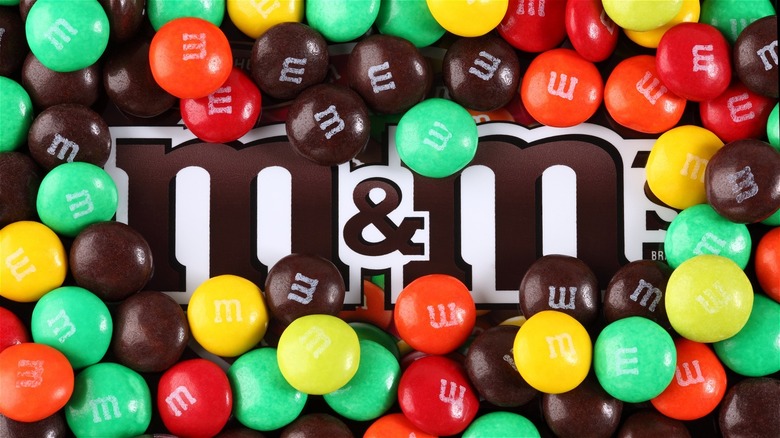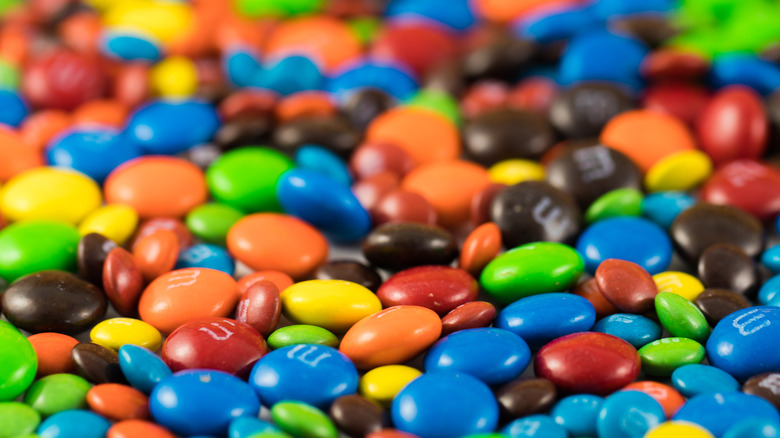The Unlikely Similarity Between Smarties And M&M's
Not to be confused with the slightly chalky and fruity U.S. candy, Smarties are a chocolate hard-shelled candy sold in the United Kingdom and Europe. Similar to M&Ms, Smarties have a hard coating that's a little thicker than a typical M&M. The candy is also slightly larger and crunchier than its U.S. doppelganger, but otherwise, both candies are very similar. So striking is its similarities to M&Ms, the candy has many on both sides of the pond questioning who ripped off whom?
While both M&Ms and Smarties were created around the same time, Smarties actually beat the Mars Inc creation to the market by four years. Smarties was created in 1937, while Mars didn't start producing M&Ms until 1941. However, both candies were predated by the French candy dragée, which was chocolate with a hardened sugary outer layer. Sound familiar? Dragée was created as a method for the upper class, particularly women, to enjoy chocolate without staining their gloves. This method predates both companies by several years, becoming popular in the late 1800s.
So did M&Ms and Smarties take this process and run with it? Well, their histories may be more intertwined than that with conflicting origins on how Forrest Mars Sr. got his idea for America's favorite hard-shelled candy.
M&Ms took inspiration from Spanish Civil War
In 1932, Forrest Mars Sr., the son of Mars Inc. founder Frank Mars, had a disagreement with his father over the direction of the company. He decided to take his portion of Mars Wrigley Confectionary to Europe, expanding by producing chocolate bars for the soldiers fighting in the Spanish Civil War. According to The Guardian, Forrest ran into George Harris, who would go on to create Smarties, while there. Both businessmen noticed soldiers eating dragée-style candy and realized its potential. They allegedly agreed not to compete in each other's markets, thus why M&Ms began production in America and Smarties in Europe.
Several historians have disputed Mars and Harris ever making such an agreement, but what we do know is it would take another war for M&Ms to truly take off. Initially, Forrest marketed his candy solely to military members. With World War II on the rise, he partnered with Bruce Murrie, the son of Hershey executive William Murrie. Thus, M&Ms (the initials of both businessmen's last names) were born. The candy proved to be popular with soldiers raising demand for the item at home after the war ended.
While Smarties and M&Ms share a complicated history, both continue to stand the test of time. According to Statista, M&Ms ranked as the top chocolate brand in the United States in 2017. Meanwhile, Nestle acquired Rowntree, the parent company of Smarties, in 1988 and still produces the candy in several European countries.

